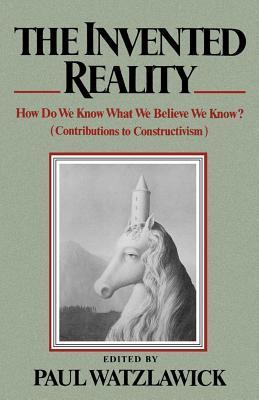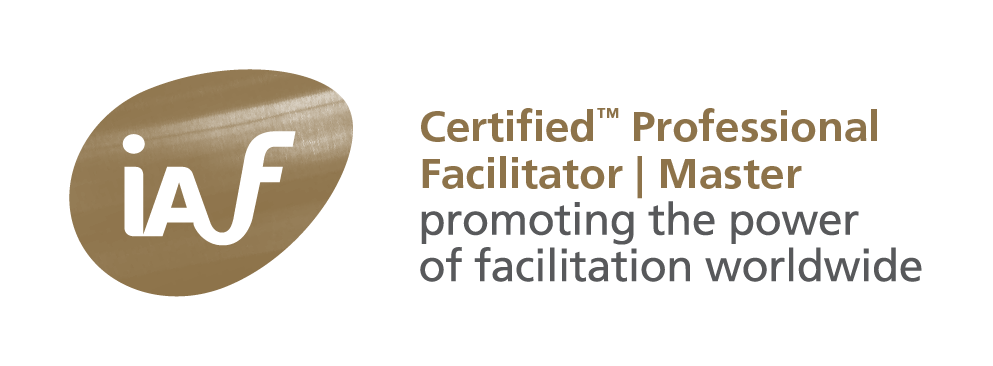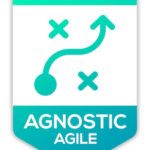One invents reality. Inventing, in terms of McWhinney’s model, combines inducing with realizing (red –inducing –> yellow –realizing –> red).
We use an idea or concept like reality to explain “what works”. The question “does reality really exists?” while referring to an outside reality is like asking “does this terrain exist?” while referring to the map. You cannot travel from here to there on a map, only on a terrain. The same holds for reality: you can only realize her through engaging.
In the Dutch (and German) language one can use the word “werkelijkheid” (Wirklichkeit) for reality. The English “actuality” comes closest, as the word “werk” implies act-ions, working. This work consist of actively constructing “reality”. One is actually “producing reality”, realizing reality. Really. Continuously. A stream of consciousness consists of a stream of reality.
Or, as Watzlawick wrote, reality is being invented (The Invented Reality). Inventing or constructing reality cannot be done arbitrarily. Reality has to be made, realized, like a house or building (real estate!) has to be build. One has to use some architectural principles or the house will collapse on you. Through trial and error, we invented high-rise (and still make mistakes).
In adapting one’s behaviour to reality, one invents reality. A reality that works. In this way, one’s reality necessarily becomes structurally coupled with actuality, actual reality.
Reconstructing reality
So one constructs the realities one requires, the realities one uses. One “adapts” so to say, realities to one’s need and use, and works with “what works”. Only don’t confuse your model of reality (reality-in-use) with reality-in-reality.
An accurate model will have the same structure as what it represents, even if its size, appearance and material are entirely different. (Italics by the authors) Robert and Ellen Kaplan, The Art of the Infinite – The Pleasures of Mathematics, Oxford University Press, (2003, p 264)
In the same kind of way, one constructs, or has constructed one’s reality: it works, you inhabit, live “inside”, your “house”. This is why we call it “habits”, derived from Latin habitat or “house”. I’m using the word “house” also because this belongs to the (Jungian) archetype of self. Home is where the heart is.
I always compared the word “archetype” with “architect”: an architect doesn’t build an house. The builders do. And everything a carpenter, plumper or brick layer did, one can remove from the house. What the architect did, one cannot remove, but one will recognize it immediately. (My grand father was an architect, his trade mark was adding a round window, to the annoyance of a house wife).
Inhabiting habits
Constructing a (one’s) reality is like scaffolding a building. Once the building has been realized (!), one doesn’t need the scaffolding any-more. A house is static. However, because one is, you are, dynamic, living; one is in flux, moving. In doing so, one continuously de/re-constructs “reality”. Living organisms produce “realities” continuously. That’s actually working.
These (mental, personal, ideal, … ) constructs have to be self-referent, actually meaning self-made, because your-self observes and (you) take part in observing. Observing processes of observing is not needed, and only possible in meditating.
These constructs therefore have to be of fractal dimensions, intuitively I would suggest the Golden Ratio, 1.6180… . This less than three dimensional, as building are, but more than one. In one’s mind, one reconstructs a three dimensional model of a house from a flat image.
In language we construct sentences, which are linear, one-dimensional. So one cannot (re)construct reality in language. Like the map is not the territory, so your reality is not real reality. Reality is at-work.
Connected reality
We have the word realiteit in Dutch also (I once read that in Dutch we have relatively more words than other languages) . The word consists of the Latin “res” or things, affairs and “li”. The latter is a very ancient lemma meaning something like connection, as in li-ne, a line connects. So I say, the word reality suggests something like connecting-with-things.
Reality as-a-concept is a real concept (based on Vaihinger): made-up (invented), used and proven useful. And, paradoxically, can be discarded after being used. One realizes reality.
Implications for facilitating groups of people
Reality perceptions differ. Use these difference to induce a common “reality” in this actual situation. For instance by making metaphors explicit through configurating or using images or clean language. It isn’t necessarily one reality everybody agrees on. They only require it to be workable, realizable. In working, they’ll realize “what works” and what doesn’t. In reflecting (action learning) they should figure out better working “realities”.
At the end of a meeting, ask what everybody is going to do next and what they’ll do when it doesn’t work. I call this a pre-emptive. A problem is a difference between actual (realized) situation and expected associated with a negative emotional load. By thinking about what may happen, you shift the expectations and lessen the load.






